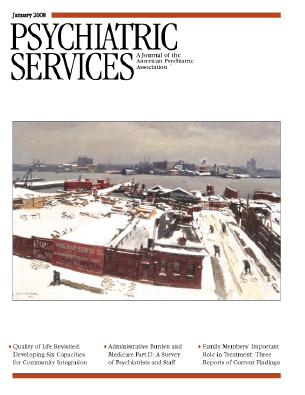The Medicare Part D prescription drug plans (PDPs), which were created by the Medicare Modernization Act, are now in their third year. The Kaiser Foundation has developed a series of two-page data "spotlights" analyzing key aspects of PDPs available to beneficiaries in 2008 and examining relevant trends since their inception in 2006. Four spotlights are currently available—on premiums, the coverage gap (commonly referred to as the "doughnut hole"), benefit design, and specialty tiers.
As of July 2007 more than 24 million beneficiaries were enrolled in a Medicare Part D plan—17 million in stand-alone PDPs and seven million in Medicare Advantage drug plans, which do not charge a premium. The Kaiser spotlight on premiums examines amounts charged by the 1,824 stand-alone PDPs being offered nationwide in 2008. As in previous years, 2008 premiums range widely, from $9.80 to $107.50 per month. A central idea behind the structure of Part D is that participants will respond to marketplace changes to minimize out-of-pocket costs—typically by switching plans. However, 90% of enrollees did not switch plans between 2006 and 2007, according to data from the Centers for Medicare and Medicaid Services. The Kaiser analysis estimates that if enrollees remain in their current plans in 2008, the average monthly premium would increase from $27.39 in 2007 to $31.99—a 17% increase. Three-quarters of enrollees will face higher premiums in 2008 unless they switch to a lower-premium plan.
A key factor influencing premiums is whether the plan helps pay for drugs in the coverage gap, a period during which enrollees must pay the full cost of all medications after reaching an initial benefit limit ($3,216 in 2008) and until they qualify for catastrophic coverage. Under most plans, beneficiaries who are dually eligible for Medicare and Medicaid are not responsible for costs in the coverage gap. Roughly 70% of PDPs offer gap coverage, but in 2008 only one stand-alone plan will cover brand-name drugs in the gap. The rest provide gap coverage only for generics. From 2007 to 2008 the average premium for PDPs that provide gap coverage increased by 23%. Monthly premiums in these plans are about double those of PDPs with no gap coverage (in 2008 about $63 and $30, respectively). The Kaiser spotlight on premiums notes that although many beneficiaries are interested in plans that offer gap coverage, it is not clear whether the enhanced benefits, which cover only generic drugs, provide added value commensurate with the higher premiums.
The Kaiser spotlight on the coverage gap provides additional details. PDPs that offer gap coverage have relatively low enrollment (about 8% of all 2007 enrollees), and enrollment is not expected to increase significantly in 2008. About 1.5 million beneficiaries (6% of enrollees) reached the coverage gap in 2006, and the estimate for 2007 is three million.
The Kaiser spotlight on benefit design examines products offered by 15 organizations, representing 88% of all PDPs. In 2008, as in previous years, only about 10% offer the standard benefit defined by CMS: a $275 deductible, 25% coinsurance up to the $3,216 coverage gap, and catastrophic coverage. Most plans eliminate the deductible and charge flat dollar copayments rather than coinsurance. The copayments reflect three cost-sharing tiers—generic drugs, preferred brand-name drugs, and nonpreferred drugs. Since 2006 most plans have had the three-tier design—69% of plans in 2006 and 74% in 2008. Since 2006 average cost sharing has increased by 29%, or $15.95, for a 30-day supply of nonpreferred drugs and 11%, or $2.99, for preferred brand-name drugs. Cost sharing for generics has remained stable since 2006. These trends reflect stronger financial incentives to switch to generics. The Kaiser spotlight on benefit design notes that in 2007 Part D enrollees paid more, on average, for preferred and nonpreferred drugs than did people in employer-sponsored insurance plans—$29.36 compared with $25 for preferred brands and $63.61 compared with $43 for nonpreferred brands.
A key trend in benefit design is an increase in the number of plans with a fourth tier, or specialty tier—from 54% of plans in 2006 to 87% in 2008. Specialty tiers are for high-cost drugs—$600 or more per month in 2008. In general, if an enrollee can establish that a nonpreferred drug is medically necessary and no preferred drug would be as effective, the enrollee can pay the lower cost sharing that applies to the preferred drug. Enrollees do not have the right to ask for an exception if a drug is in the specialty tier. In 2007 PDPs with a specialty tier included 150 drugs on that tier, accounting for 12% of all covered drugs, according to the Kaiser spotlight, which notes that selection effects may drive nearly all plans to adopt specialty tiers and to assign more drugs to them.
The Kaiser spotlights are available at www.kff.org/medicare/med102507pkg.cfm.

